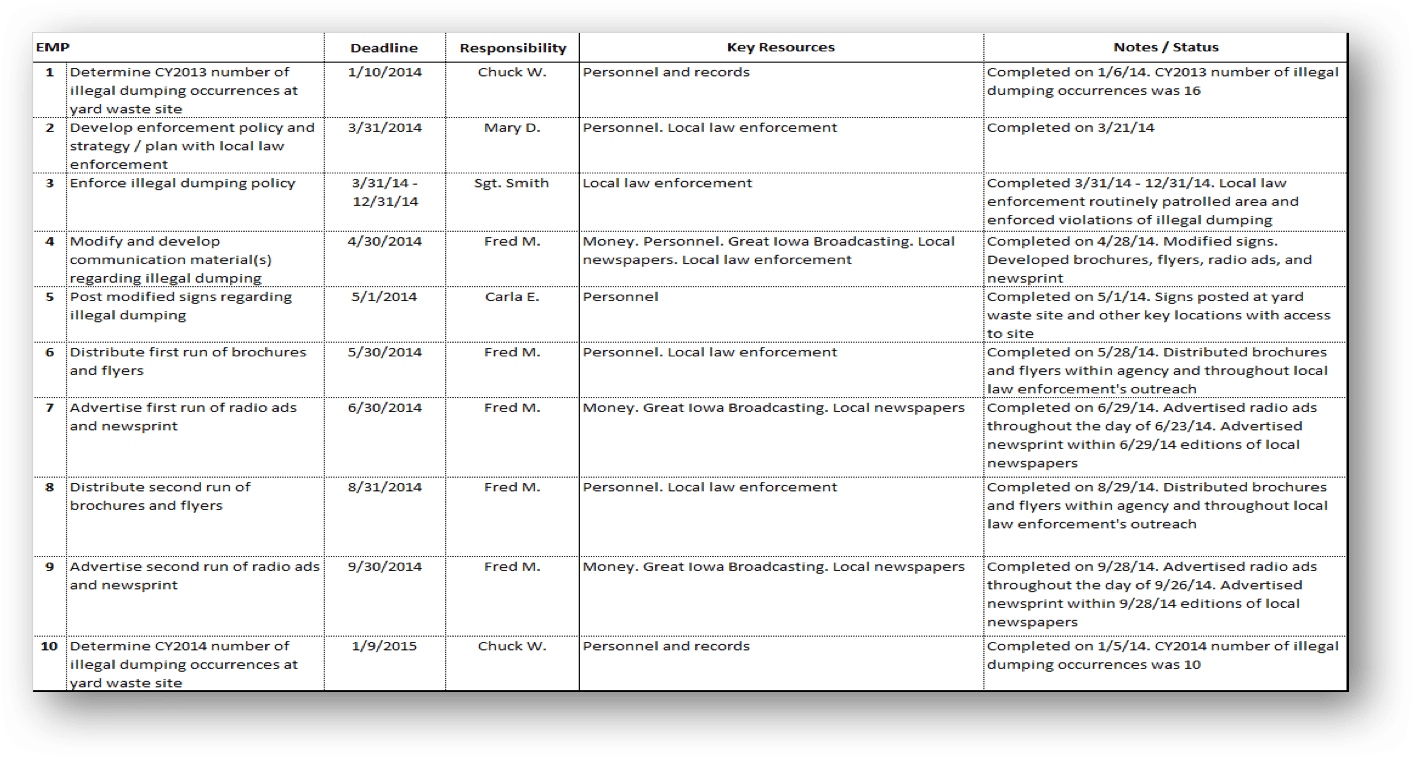Is Your Environmental Management Program Strong or Weak?
By Cory Sander
If you’re an EHS manager, you’re likely running a complex environmental management program. It’s the nitty-gritty specifics of how you’re carrying out your EHS objectives and targets. In other words, the sum of all those day-to-day actions you and your team carry out.
It can help to think of all these industry terms through the lens of a road trip. An objective is an overall change or moving from point A to point B. A target is a measurable outcome, such as finishing that road trip in seven hours. Your environmental management program is the turn-by-turn directions that make it all happen.
So how good are you at giving directions? Is your environmental management game strong or weak? Use these checklists to see how you’re measuring up.
Strong Environmental Management Programs
How many of these boxes can you check? Ideally, strong programs encompass all these traits.
Documented.
Your program needs to be documented within a formal EHS Management Plan. This means it’s written down, and ideally, easy to access by everyone involved in carrying out the individual steps. EHS software can help make this process easier.
Directly linked to targets.
Each item listed out in your plan should be linked to one of your targets (completing that road trip in 7 hours or reducing waste you send to the landfill by 20%).
Easy-to-follow.
There should be step-by-step instructions for carrying out the items listed in your plan, so it’s easy for staff members to complete the tasks. Don’t count on knowledge living in the heads of various people. Write with a brand new staff person in mind.
Specific and realistic.
Think roles, responsibilities and resources. Each task in your program needs one name next to it—the person who’s ultimately responsible for making sure it gets done. Also, be realistic about the resources team members need to carry out the program and be sure those things are available. It might be crucial safety gear or enough time to complete a monthly inspection.
Incremental deadlines.
You’re not going to hit all your objectives and targets by cramming at the end of each quarter or the whole year. Set up incremental deadlines for each item in your plan. If you want to reduce greenhouse gas emissions by 20% over the course of the year, you might set up incremental deadlines to reduce it by at least 5% each quarter.
Benchmark as needed.
Benchmarking is the process of comparing yourself to industry standards. An environmental management system can help you do this or keep up with industry trends and stats in trade journals. It’s a good way to grade yourself compared to peers.
Collect notes and comments.
Your program isn’t static, and continuous improvement requires a feedback loop. Give your team and management a way to provide notes and comments on the program. They just might help you achieve your objectives and targets faster.

Weak Environmental Management Programs
These are things you want to avoid. Are any of these weak spots lurking in your program?
Undocumented.
All the things you and your team do live in one or two people’s heads. Or maybe on some notes scattered between two desks and three different file cabinets.
Not linked to targets.
You have objectives, but they lack targets. And without a target, there’s no way to measure whether you’re successful or not.
Vague.
There are some general ideas: Be more environmentally friendly. Or comply with regulations. But there aren’t many specifics to go on. Instead of being vague, think SMART: Specific, Measurable, Achievable, Relevant, and Time-Bound.
Disorderly.
A messy program isn’t any more functional or appealing than a messy room. Make sure your program includes order and clarity. This requires defining how you’ll meet those objectives and targets and outlining who’s responsible. Then communicating it all in an orderly fashion.
How did your program stack up with these checklists? Are you weak? Strong? Or somewhere in between?
